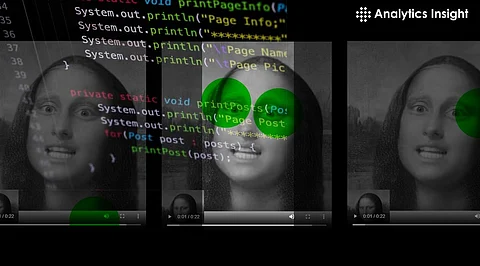
- Insights
- Cryptocurrencies
- Stocks
- White Papers
- Industry
- Geography
- Insights
- Cryptocurrencies
- Stocks
- White Papers
- Industry
- Geography


In a groundbreaking move that combines artificial intelligence and visual content, Microsoft introduces AI model VASA-1, an innovative AI model that can make images "talk." This cutting-edge technology has numerous potential applications across numerous industries and fields and gives AI-driven image processing a significant boost.
Natural language processing is used in Vasa-1, which means that the traditional shapes are used in the images in the pictures. Communicating with the VASA 1 has the potential to increase engagement.
VASA-1 extracts and transforms image features into meaningful representations using convolutional neural networks (CNNs). After that, those representations are fed into an attention-based totally recurrent neural network (RNN), which allows the version to produce coherent and contextually relevant spoken descriptions. By combining visual and auditory modalities, VASA-1 bridges the gap between snap shots and natural language to provide exciting possibilities for interactive multimedia stories.
The introduction of Vasa-1 marks a pivotal moment in the development of AI-enabled imaging. "Speaking" of visual objects, the model goes beyond traditional image recognition capabilities. As a result, it provides users with a way to interact with visual data that is easy to understand and use. From assisting visually impaired individuals in navigating their surroundings to providing immersive audio-visual experiences in entertainment and gaming, the applications for VASA-1 are virtually limitless. Additionally, the model can be easily incorporated into AI-driven applications and services that are already in existence, enabling developers to enhance the depth and accessibility of their offerings.
In addition to its sensible packages, VASA-1 has the capability to boost AI and human-computer interaction (HCI) research. The development of VASA-1 also creates new opportunities for interdisciplinary collaboration, bringing together specialists from quite a few fields to research current AI-pushed multimedia technology.
Although VASA-1's capability is undeniably modern, it also increases large moral, privacy, and bias worries regarding AI. Fixing any biases within the training information, shielding clients' privateness, and lowering the hazard of horrible effects or wrong use of the generation are all part of this.
A new era of AI-driven image processing begins with Microsoft's VASA-1, which allows visual content to transcend conventional boundaries and become more interactive, accessible, and engaging. As researchers and developers continue to investigate VASA-1's capabilities, we can anticipate even more innovative applications and advancements in the field of AI-driven visual computing.
